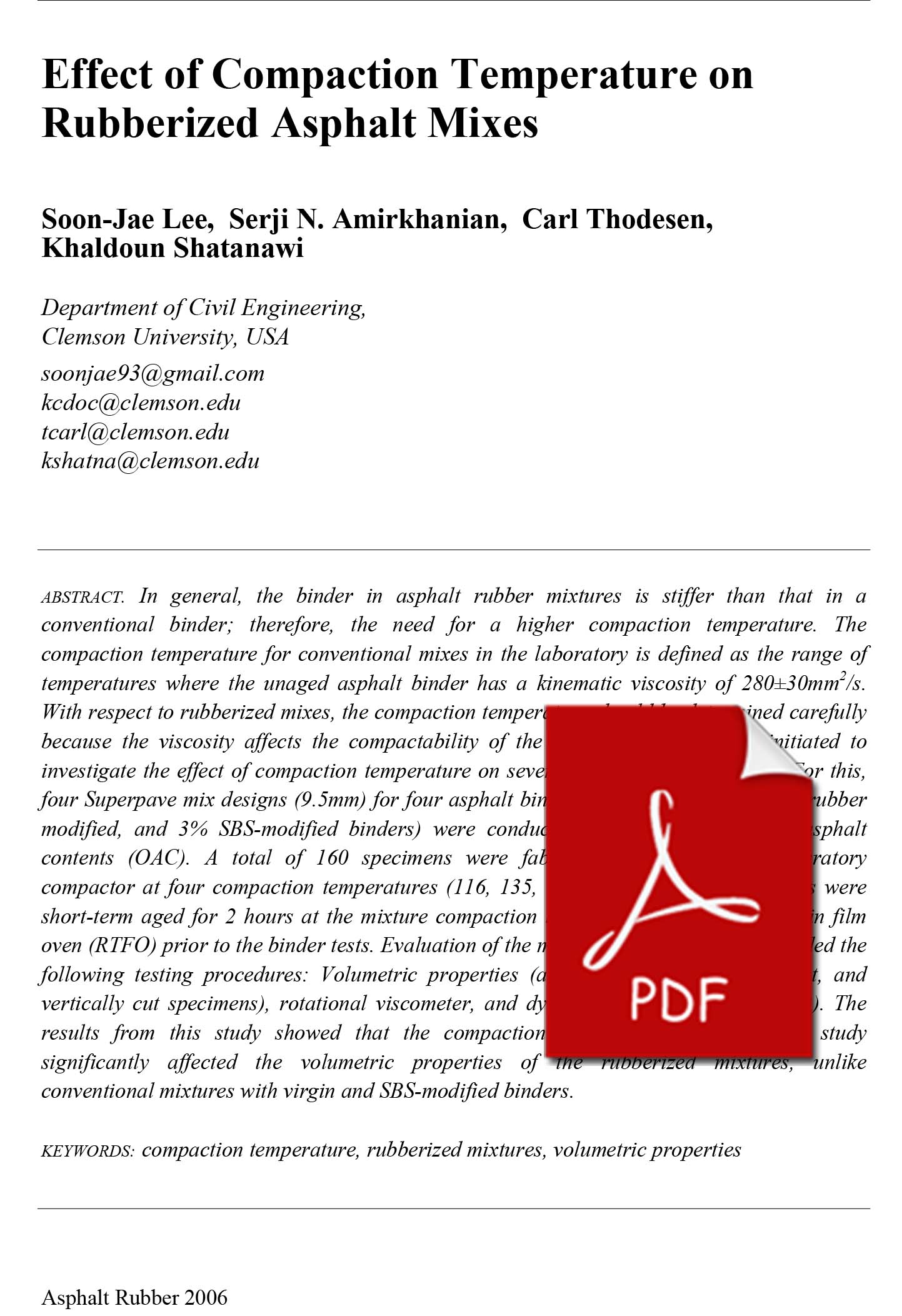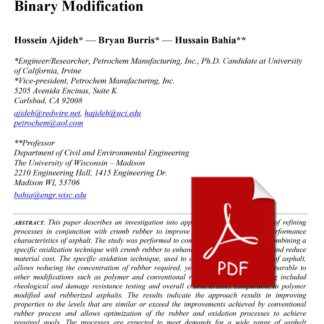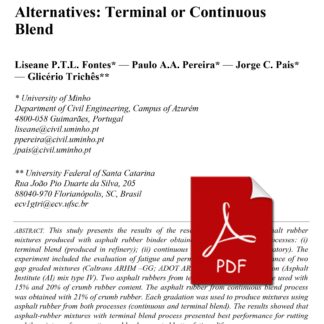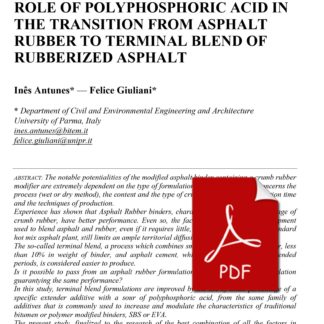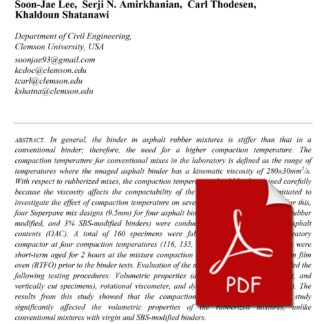Description
In general, the binder in asphalt rubber mixtures is stiffer than that in a conventional binder; therefore, the need for a higher compaction temperature. The compaction temperature for conventional mixes in the laboratory is defined as the range of temperatures where the unaged asphalt binder has a kinematic viscosity of 280±30mm2/s.
With respect to rubberized mixes, the compaction temperature should be determined carefully because the viscosity affects the compactability of the mixes. This study was initiated to investigate the effect of compaction temperature on several rubber-modified mixes. For this, four Superpave mix designs (9.5mm) for four asphalt binders (control, 10% and 15% rubber modified, and 3% SBS-modified binders) were conducted to determine optimum asphalt
contents (OAC). A total of 160 specimens were fabricated using Superpave gyratory compactor at four compaction temperatures (116, 135, 154, and 173°C). The binders were short-term aged for 2 hours at the mixture compaction temperatures using rolling thin film oven (RTFO) prior to the binder tests. Evaluation of the mixtures and the binders included the following testing procedures: Volumetric properties (as-compacted, horizontally cut, and
vertically cut specimens), rotational viscometer, and dynamic shear rheometer (DSR). The results from this study showed that the compaction temperatures used in this study significantly affected the volumetric properties of the rubberized mixtures, unlike conventional mixtures with virgin and SBS-modified binders.

